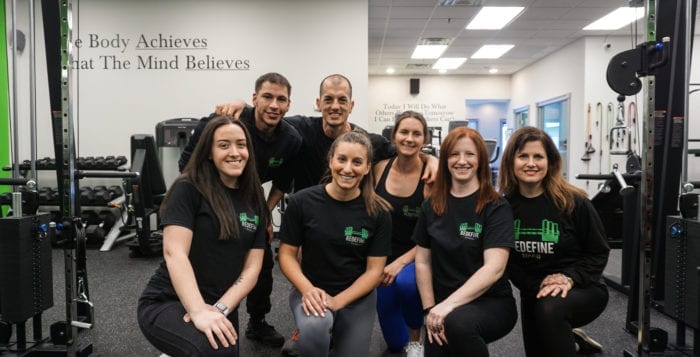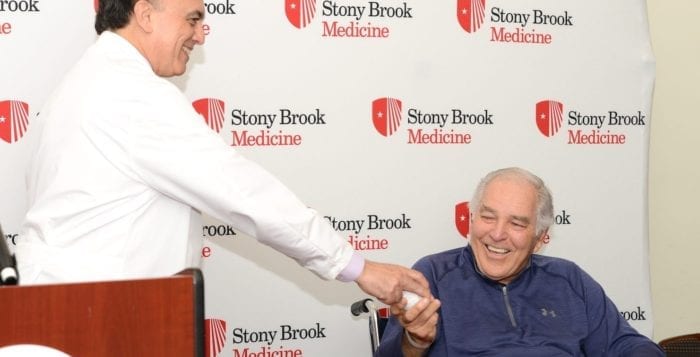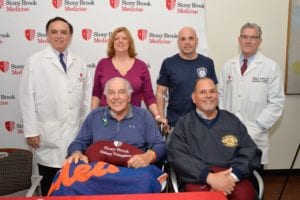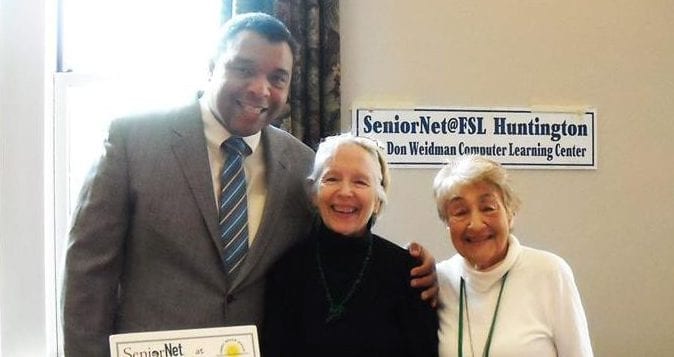Helping people and seeing the positive impacts on their lives is the best part of the job for Anthony Amen, the owner of Redefine Fitness in Mount Sinai.
“There’s nothing better than that,” he said.
Though for Amen, his path to opening his new business last fall started almost a decade ago when he was a sophomore in college at SUNY Oswego.
It was there in February 2010 when Amen was playing broomball, a game played on ice in a similar way to hockey, but instead of a stick it’s done with a rubber-headed broom, and instead of skates players wear rubber-soled shoes. He was playing with his friends, but his life changed when a friendly game took a turn for the worse.

“We were playing a game and a friend of mine went in for a slide tackle,” he said. “I was trying to avoid the hit and slipped, fell backwards and whacked my head on the ice very hard.”
Amen suffered a serious concussion, along with injuries to his neck and back. For three-and-a-half months he was unable to look at any visible light and sat in his bed in the dark for much of the time.
As a result of his head injury, Amen began suffering from debilitating migraines. He could barely move his head and he was unable to put his hands above his head.
He said sought help from doctors, but each told him that concussions take time to recover from, and it was something he would have to learn to deal with.
“I went to 25 different doctors and they all told me the same thing — ‘There’s nothing wrong with you. We can’t do anything,’” Amen said. “They put me on Percocet and muscle relaxants and told me ‘Good luck.’”
He said a doctor told him he was “a physician, not a magician. I don’t know what you want from me.”
It was those experiences that served as the catalyst that would change Amen’s life.
Amen said he was stubborn, and he didn’t want to give up and didn’t want this to be his norm.
“I started experimenting and working out in the gym to try to make myself better,” he said. “The more I did the better I felt.”
The Mount Sinai business owner said he was able to fix himself from getting migraines every week and being unable to get out of bed, to never having one in more than five years.
“One of the biggest moments for me was being able to put my hands over my head again,” he said.
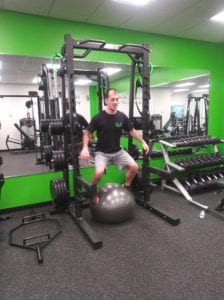
Amen fell in love with fitness and wanted to teach people what he had learned. He began working at various gyms throughout Long Island as a trainer and in management, with a goal to eventually own a place of his own. A year-and-a-half ago, his vision became a reality when he decided he would open Redefine Fitness.
“It was very stressful to open a business, but I was passionate about this and I had to try,” he said. ”I think it was the right time for me to try. I have no wife and kids — I didn’t want to regret not doing this.”
In fall 2018, Redefine Fitness opened its doors with one of the goals of making the connection between fitness, medicine and rehabilitation. They use research-based information in conjunction with their certified trainers to make tailored workout programs for their clients.
Amen admits the first few months open have gone better than he could have ever imagined.
“The clients have been so great, they tell me they see the passion in me,” he said.
One experience that sticks out to Amen was when he trained a 65-year-old woman who had a lung transplant and had a breathing machine. He said she would struggle to tie her own shoes.
“We got her to squat 175 pounds and got her to run,” he said. “It was amazing seeing this woman’s life change from being told you couldn’t do something. It shows that if you put your mind to something you could achieve anything.”
The Mount Sinai gym has five trainers, including Amen, and offers one-on-one training sessions, weight loss programs and various classes as well as special needs and post-rehab programs.
In the future, Amen hopes to expand the gym to other locations, and wants to continue making a positive impact in the community.
Reflecting to his pre-college days, Amen said he was not the athlete type and used to run 15-minute miles and be happy about it.
“Looking back I would’ve never pictured this in a million years,” he said. “I want to show [people] that there’s no giving up. I want to pass that knowledge and passion to everybody else.”

